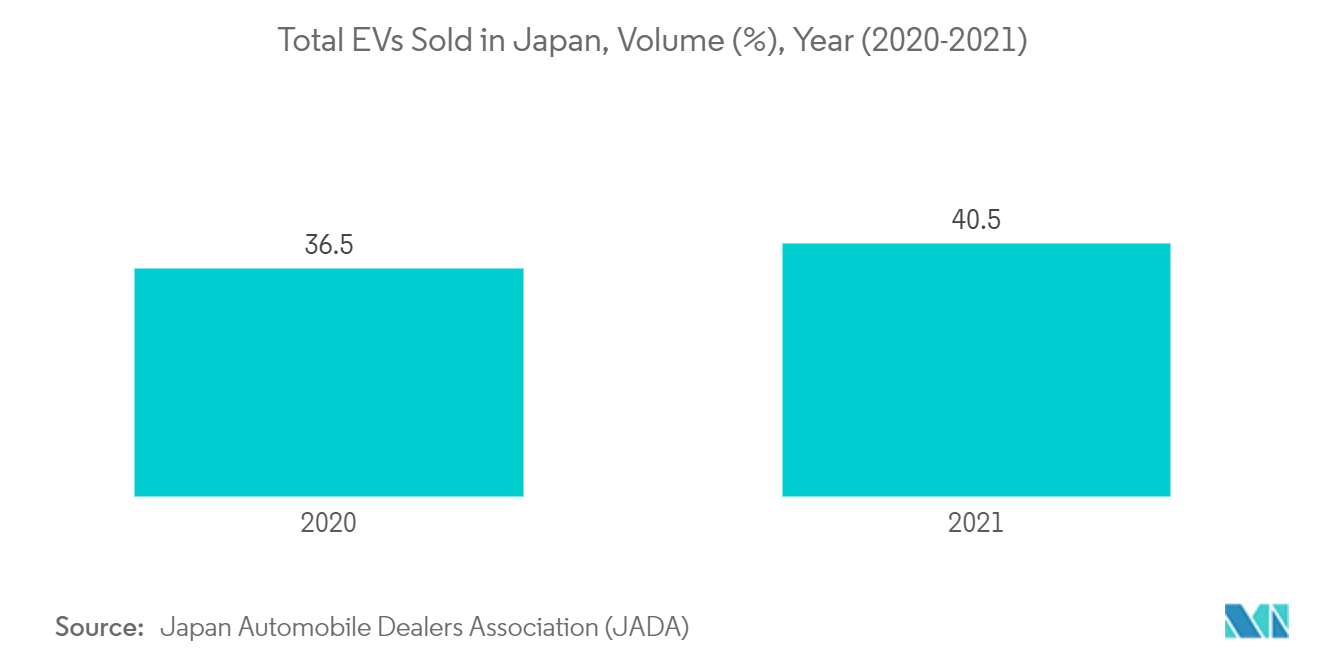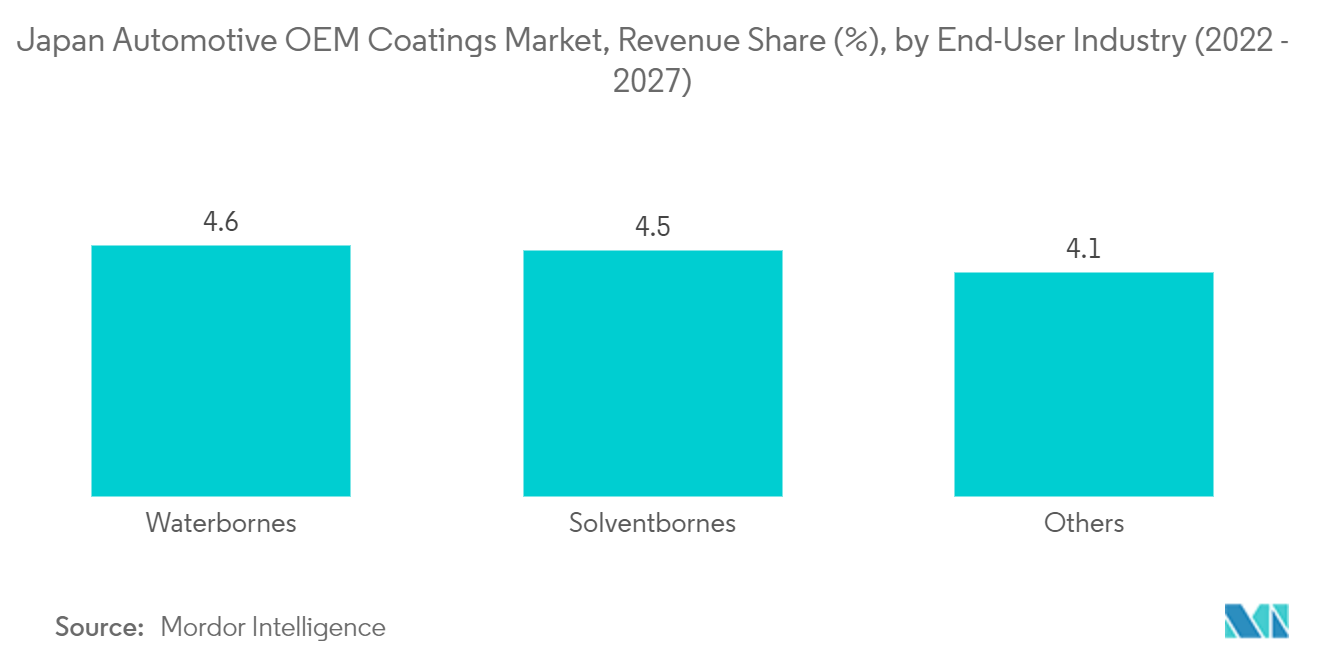Market Trends of Japan Automotive OEM Coatings Industry
This section covers the major market trends shaping the Japan Automotive OEM Coatings Market according to our research experts:
Increasing Demand for Electric and Hybrid Vehicles
- Japan is the world's third-largest automotive manufacturer, following China and the United States. The Japanese automobile market is dominated by domestic manufacturers such as Toyota, Nissan, Honda, Suzuki, and Mitsubishi.
- In Japan, the rising demand for electric vehicles is being driven by a high concentration of EV manufacturers, as well as increased environmental consciousness and concern about carbon emissions. Also, Electric Vehicles (EVs), Hybrid Electric Vehicles (HEV), and Plug-in Hybrid Electric Vehicles (PHEVs) are considered to be promising technology for reducing CO 2 emissions.
- Additionally, The Government of Japan (GOJ) has announced a goal: by 2035, all new automobiles sold will be environmentally friendly. As a result, Japanese automakers are pushing aggressively to increase EV sales. For Instance, In May 2022, Japanese industry leader Toyota released the bZ4X electric SUV, its first mass-produced EV model, in Japan. And Nissan Motor released the Ariya, an electric SUV.
- Furthermore, In 2021, EV car sales in Japan have grown compared to Other Vehicles. For Instance, According to the Japan Automobile Dealers Association (JADA), 3,675,650 new cars were sold in 2021, and 40.5 % were electric vehicles which is around a 4% increase compared to 2020. Thus, resulting in increasing demand for automotive OEM coatings.
- Also, The Govt is providing subsidies for the purchase of new electric vehicles. For Example, In 2021, the highest amount of eco-friendly car subsidies available per vehicle is 7,200 USD.
- Hence, the aforementioned facts and factors will likely result in a higher growth rate for automotive OEM coating during the forecast period.

Water-borne Coating Dominate the Market
- Although solvent-borne technology accounts for most of the market, it is predicted to grow slowly over the forecast period.
- Regulations governing VOC emissions from hazardous air pollutants contained in solvent-borne automotive OEM coatings such as toluene, xylene, ethylbenzene, and methyl ethyl ketone are one of the major factors limiting the expansion of solvent-borne automotive OEM coatings.
- Water-based automotive OEM coatings are becoming increasingly popular due to the continuously changing environmental regulations. Water-based coatings are constantly developing to provide the same performance as solvent-based coatings. For example, mild co-solvent reducers and additives are being developed to improve water-based coatings' performance and drying times.
- The increasing adoption of waterborne automotive coatings is due to their physical and chemical qualities, such as high chemical resistance, low processing temperature, and solvent-free formulations.
- Owing to above mentioned factor, waterborne technology is expected to grow significantly during the forecast period.


